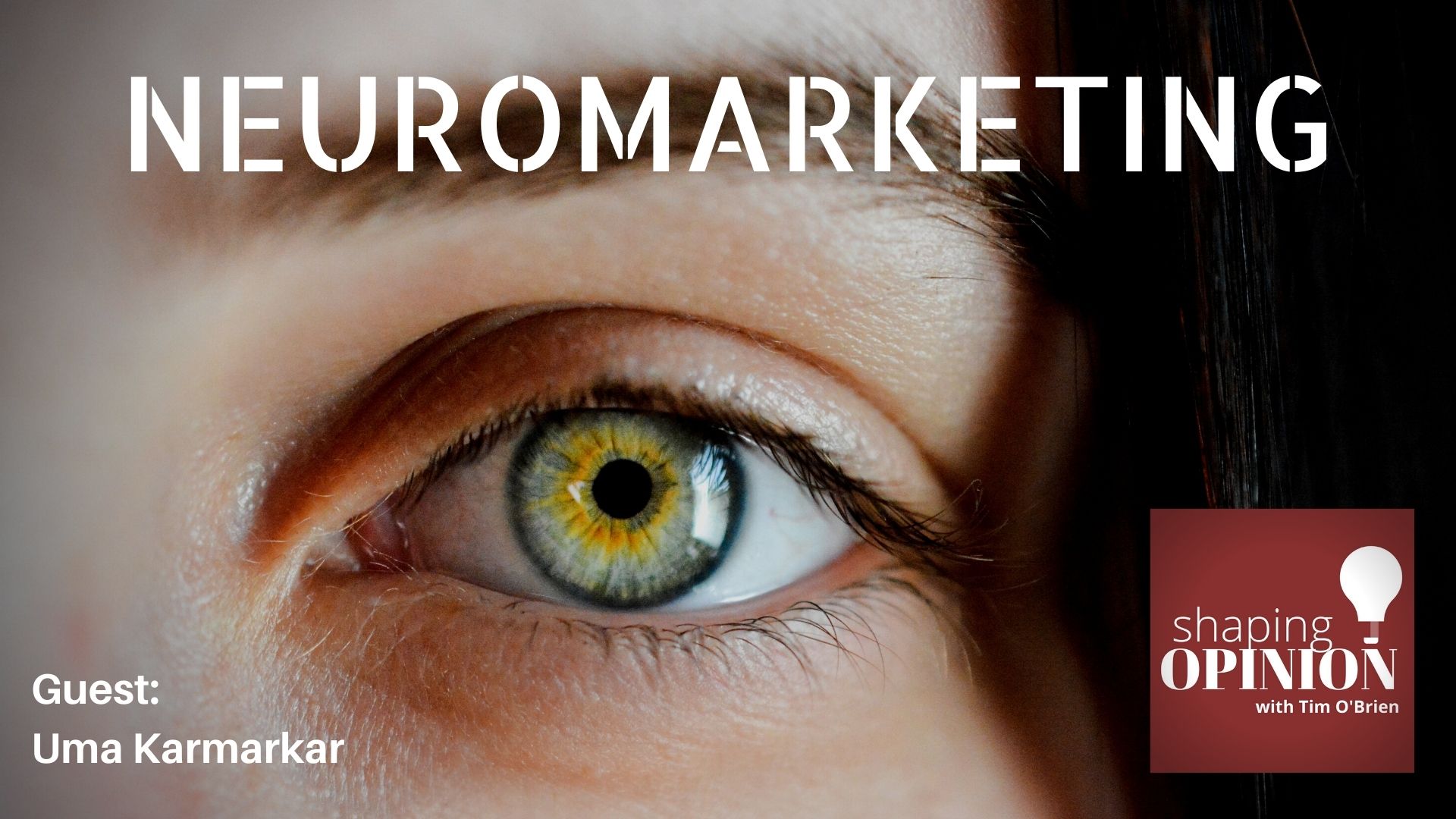Uma Karmarkar joins Tim to talk about neuromarketing. It’s a leading-edge way scientists have developed to get inside your head to understand your attitudes, preferences and perhaps future behavior when it comes to marketing to you. Uma is an assistant professor of marketing at the University of California at San Diego. Her work takes a closer look at the things that consciously and unconsciously influence how people make decisions. More deeply, she studies how people make buying decisions when they don’t have all of the information or when bias may come to play.

Not long ago, I read an article in Harvard Business Review about something I hadn’t really heard of before. But it sounded interesting.
It’s called Neuromarketing. The term alone caught my attention. “Neuro” or the nervous system, combined with marketing.
So, what is it?
According to writer Ben Harrell, “The field of neuromarketing – sometimes known as consumer neuroscience – studies the brain to predict and potentially even manipulate consumer behavior and decision-making.”
Neuromarketing is about measuring all of the physiological signals we send about how we feel.
Remember the saying, “Never let them see you sweat?” When people see you in a stressful situation, they know you’re nervous, perhaps unsure of yourself, if they see you sweating. Your perspiration is a physiological sign that you’re nervous and worried, even if your words and facial expression are under control. When people see that, they know better.
Neuromarketing takes this idea to an unbelievable level.
It measures indicators well beyond the obvious ones we can see with our naked eyes. Neuromarketing research helps organizations and companies learn more about your motivations, preferences, the decisions you make or do not make. And all of this can help them develop products and services.
We’re not just talking about selling cars or insurance. Neuromarketing can be used to get you to use software, apps and digital platforms. It can be used to try to sway your opinions through ad campaigns, marketing campaigns, political campaigns, activist issues campaigns, and so much more.
In short, neuromarketing helps researchers get inside your head to more effectively, pardon the pun, shape your opinions and attitudes.
Links
- Uma Karmarkar, UC San Diego
- Neuromarketing: What You Need to Know, Harvard Business Review
- What is fMRI?, UC San Diego
- Electroencephalogram (EEG), Mayo Clinic
About this Episode’s Guests Uma Karmarkar
 Uma Karmarkar is an assistant professor of marketing at the University of California at San Diego. Her research examines the factors that consciously and unconsciously influence how people make decisions, and the ensuing implications for marketplace practices. In particular, she looks at how people use their (incomplete) information when they are faced with uncertain decisions or unfamiliar options, and the biases that can emerge from these situations. Her work also explores the ways in which companies’ decisions about how and when to offer information can frame consumers’ expectations and influence their purchase behavior. This research takes an interdisciplinary approach, combining marketing, behavioral economics, neuroscience and psychology. Her work aims to enable firms to communicate better with their customers, and improving consumer confidence and satisfaction with the decision process.
Uma Karmarkar is an assistant professor of marketing at the University of California at San Diego. Her research examines the factors that consciously and unconsciously influence how people make decisions, and the ensuing implications for marketplace practices. In particular, she looks at how people use their (incomplete) information when they are faced with uncertain decisions or unfamiliar options, and the biases that can emerge from these situations. Her work also explores the ways in which companies’ decisions about how and when to offer information can frame consumers’ expectations and influence their purchase behavior. This research takes an interdisciplinary approach, combining marketing, behavioral economics, neuroscience and psychology. Her work aims to enable firms to communicate better with their customers, and improving consumer confidence and satisfaction with the decision process.
Before joining the Rady School, Karmarkar was an Assistant Professor in the Marketing Unit of the Harvard Business School, and spent a year as a visiting professor at the Haas School of Business at U.C. Berkeley.
Karmarkar was named a Marketing Science Institute Young Scholar in 2017. She has received research grants from the National Institutes of Health, and from the Department of Defense.
Karmarkar earned a Ph.D. in Neuroscience from the University of California, Los Angeles in 2004, and a second Ph.D. in Consumer Behavior from the Graduate School of Business at Stanford University in 2011. Prior to her doctoral work, she received a B.S. in Symbolic Systems (Neural Systems) from Stanford in 1998.




